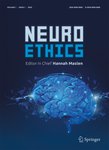Addiction

This is one of the foundational papers that established the more medicalized brain disease model of addiction (which AA and treatment facilities would borrow from, if I were to put it lightly. Hijack is a more appropriate term)
Regulation of the L-type calcium channel
Regulation of the L-type calcium channel by phosphorylation and G proteins in various tissues and eukaryotes, affecting calcium influx and signal transduction in excitable and non-excitable cells.
geneheyman.comA new approach for evaluating the behavioral effects of antipsychotic drugs (Heyman, Beer) 1987
Addiction and the Brain: Development, Not Disease - Neuroethics
link.springer.com
Dr. Marc Lewis promotes a model for addiction based around deep learning—the process by which our brain deeply integrates thoughts, beliefs, and actions when doing or experiencing something impactful, over and over again, or both. This model stands in contrast to the idea that addiction is brain disease, unable to be cured—only treated—and that demands indefinite abstinence from all mind altering substances.
One thing I'd argue as a starting point is there is no "theory" or a "model" of addiction as a disease. The arguments associated with that claim are actually not that cohesive. A common position associated with addiction as a disease is that it is an essential category, which is an idea we can get our arms around a bit better and which I discuss... See more